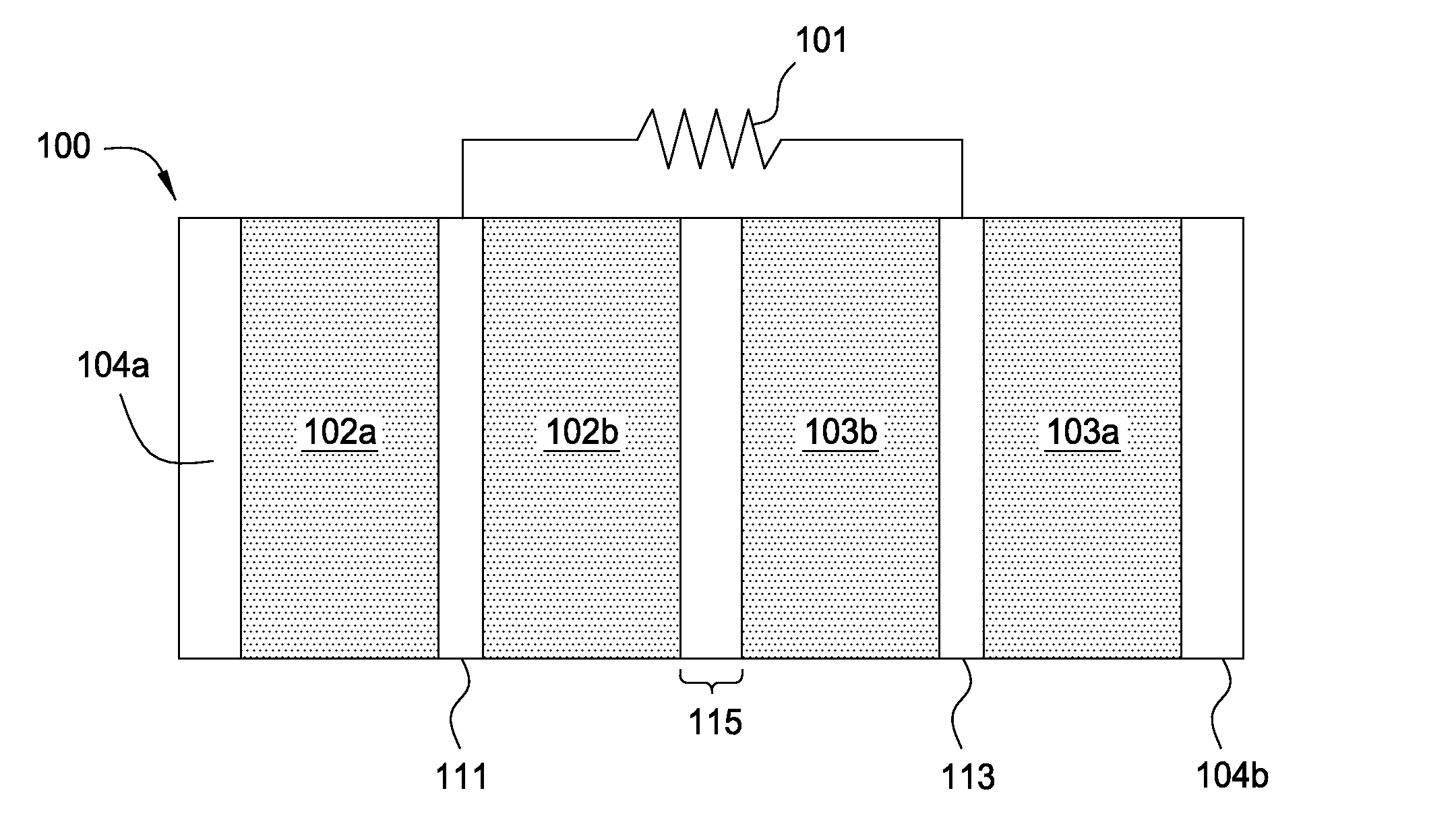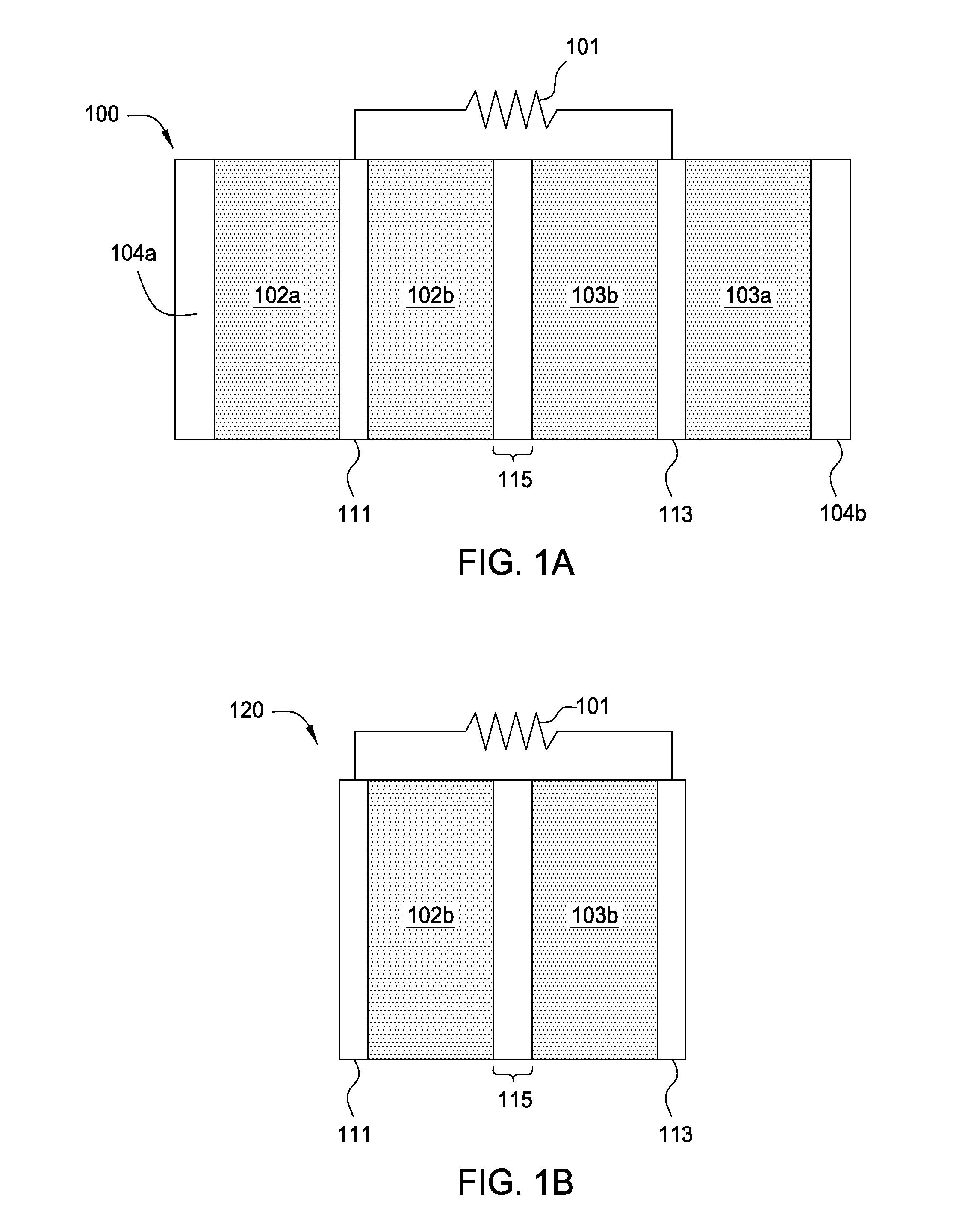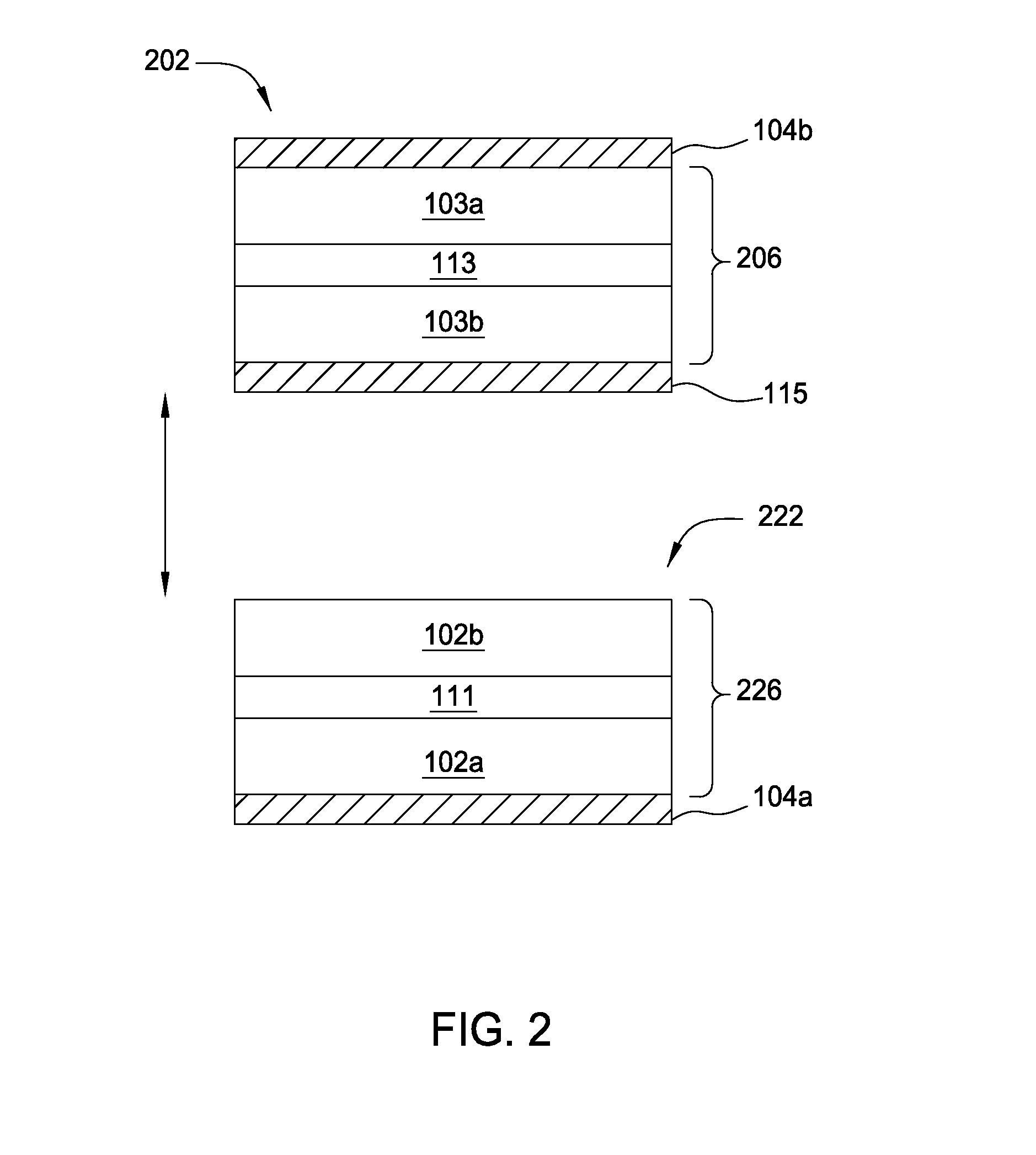Lithium ion cell design apparatus and method
a technology of lithium ion cells and design apparatuses, applied in the direction of cell components, final product manufacturing, sustainable manufacturing/processing, etc., can solve the problems of 20% of the material cost of battery cells, high porosity separators are susceptible to electrical shorts, and separators are also one of the most expensive components
- Summary
- Abstract
- Description
- Claims
- Application Information
AI Technical Summary
Benefits of technology
Problems solved by technology
Method used
Image
Examples
example 1
[0075]A 10% by weight polyvinyl alcohol (PVA) in water solution is used. The solution is loaded into a syringe with a 0.4 mm id flat capillary tip. A dc-dc convertor is used to supply from 5 to 30 kV to the tip of the capillary to form a Taylor cone with a liquid jet, and a grounded metal movable sample stage (e.g., aluminum foil) is used as the collector. The distance between the tip and the collector is varied from 50 mm to 200 mm. The samples are spun for a few minutes each, and the liquid flow rate is manually adjusted to maintain a small droplet of solution on the tip of the capillary. A Universal Serial Bus (USB) camera microscope is used to observe the liquid emission from the tip during the spinning process.
example 2
[0076]A 10% by weight polyvinyl alcohol (PVA), 0.5% by weight silica, in water solution is used. The solution is loaded into a syringe with a 0.4 mm id flat capillary tip. A dc-dc convertor is used to supply from 5 to 30 kV to the tip of the capillary to form a Taylor cone with a liquid jet, and a grounded metal movable sample stage (e.g., aluminum foil) is used as the collector. The distance between the tip and the collector is varied from 50 mm to 200 mm. The samples are spun for a few minutes each, and the liquid flow rate is manually adjusted to maintain a small droplet of solution on the tip of the capillary. A Universal Serial Bus (USB) camera microscope is used to observe the liquid emission from the tip during the spinning process.
example 3
[0077]A 10% by weight polyvinyl alcohol (PVA), 5% by weight silica, in water solution is used. The solution is loaded into a syringe with a 0.4 mm id flat capillary tip. A dc-dc convertor is used to supply from 5 to 30 kV to the tip of the capillary to form a Taylor cone with a liquid jet, and a grounded metal movable sample stage (e.g., aluminum foil) is used as the collector. The distance between the tip and the collector is varied from 50 mm to 200 mm. The samples are spun for a few minutes each, and the liquid flow rate is manually adjusted to maintain a small droplet of solution on the tip of the capillary. A Universal Serial Bus (USB) camera microscope is used to observe the liquid emission from the tip during the spinning process.
PUM
| Property | Measurement | Unit |
|---|---|---|
| Temperature | aaaaa | aaaaa |
| Temperature | aaaaa | aaaaa |
| Angle | aaaaa | aaaaa |
Abstract
Description
Claims
Application Information
 Login to View More
Login to View More - R&D
- Intellectual Property
- Life Sciences
- Materials
- Tech Scout
- Unparalleled Data Quality
- Higher Quality Content
- 60% Fewer Hallucinations
Browse by: Latest US Patents, China's latest patents, Technical Efficacy Thesaurus, Application Domain, Technology Topic, Popular Technical Reports.
© 2025 PatSnap. All rights reserved.Legal|Privacy policy|Modern Slavery Act Transparency Statement|Sitemap|About US| Contact US: help@patsnap.com



